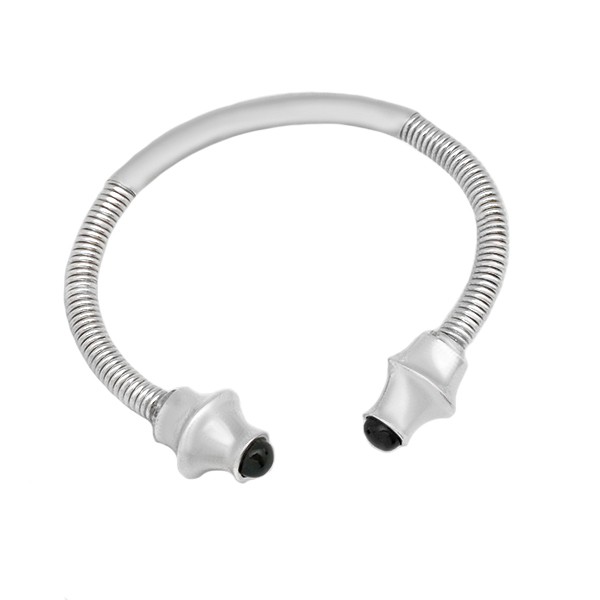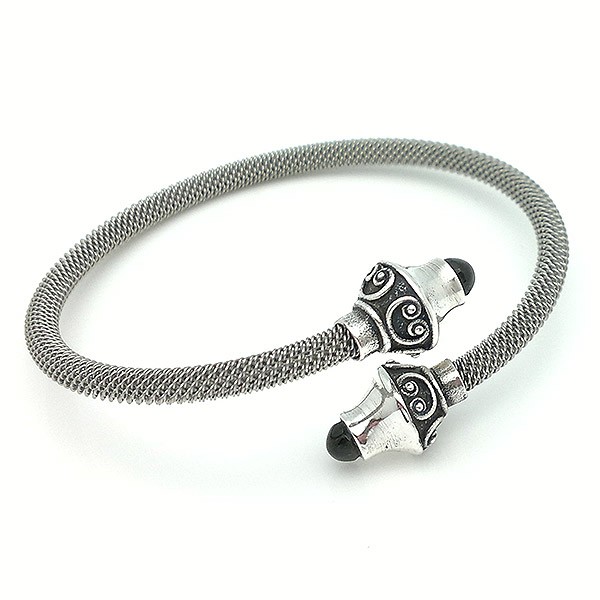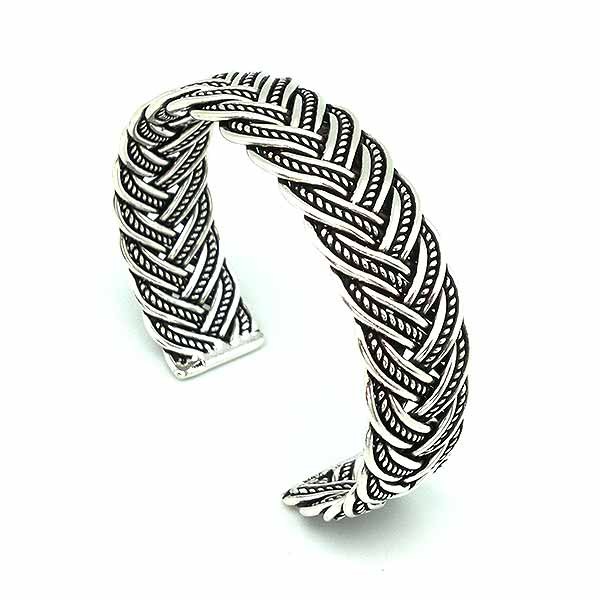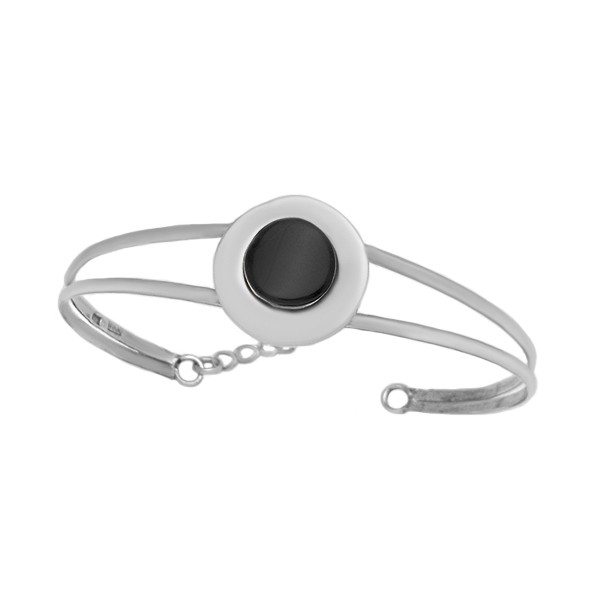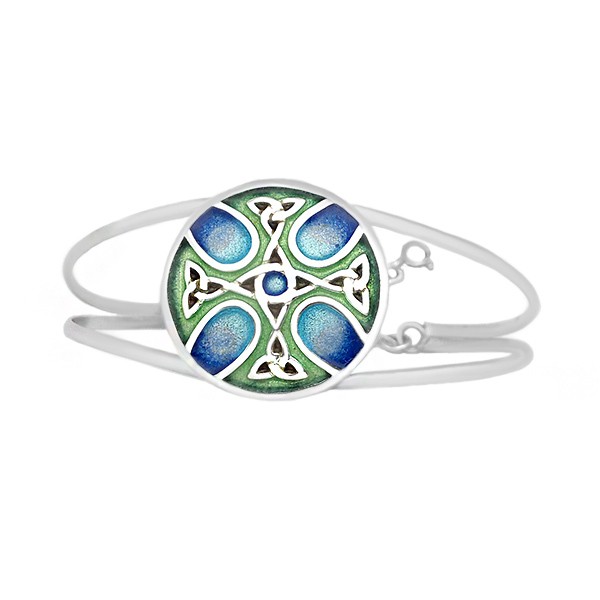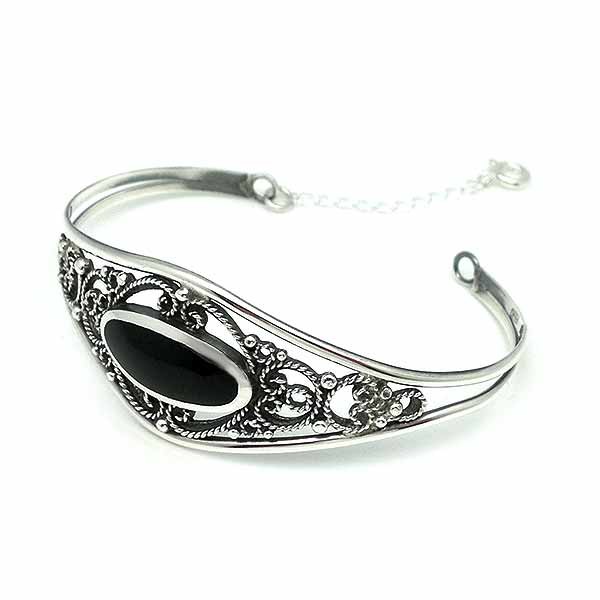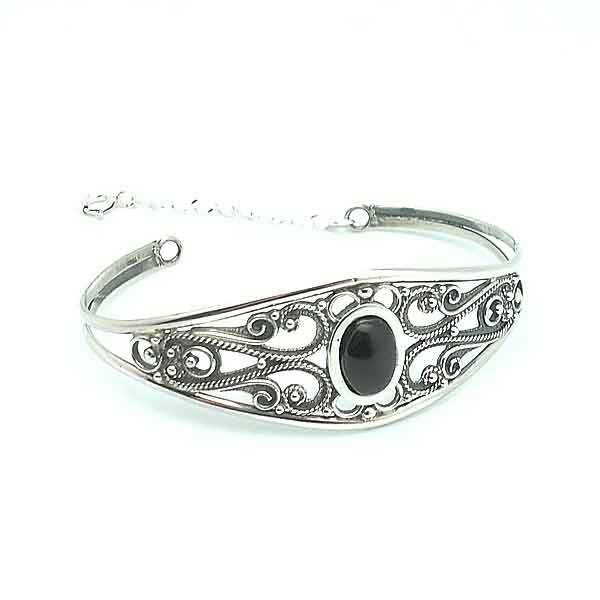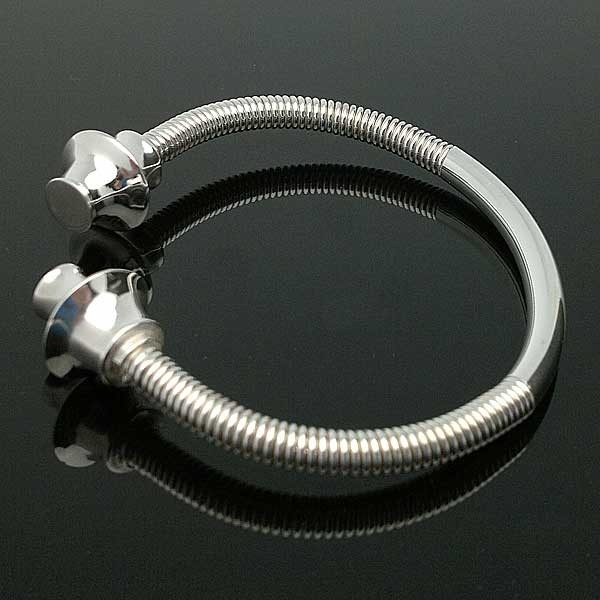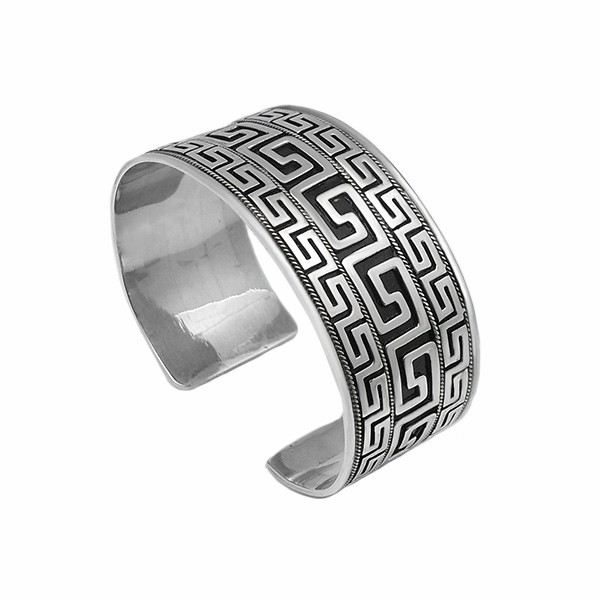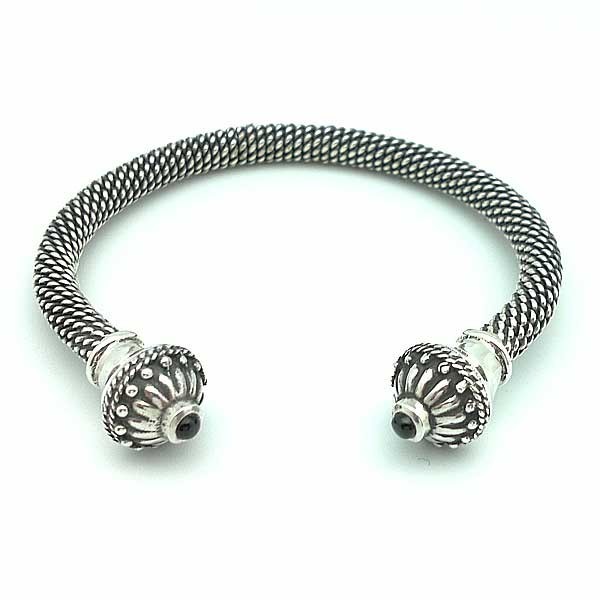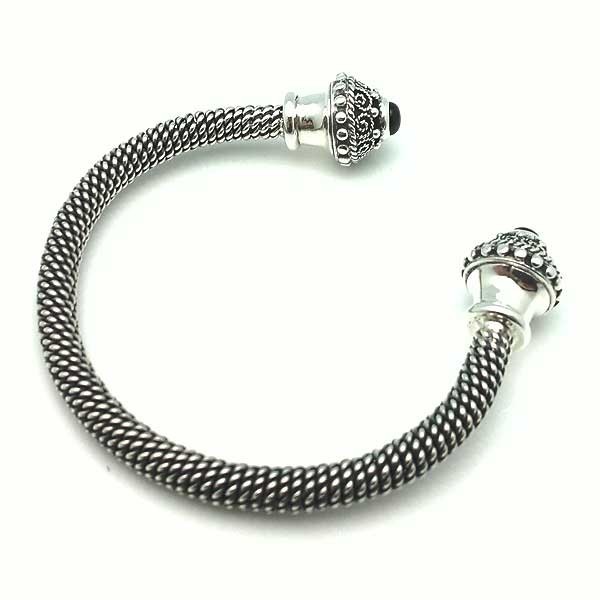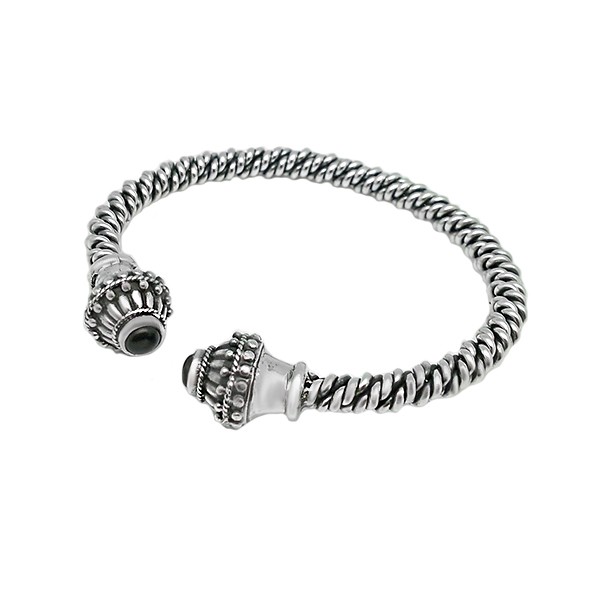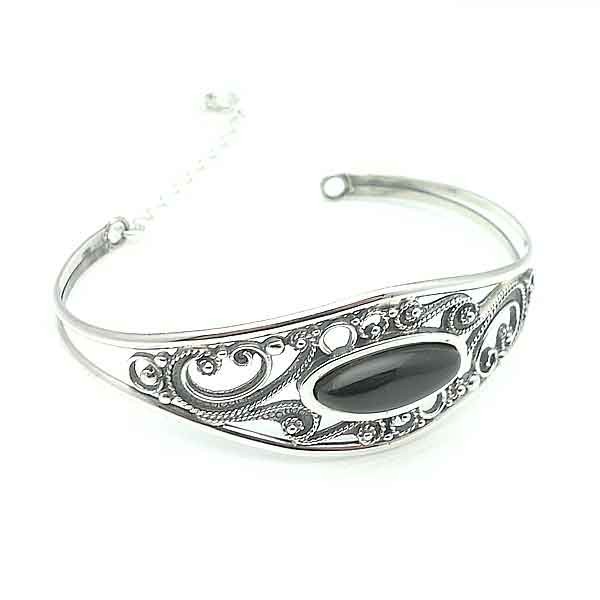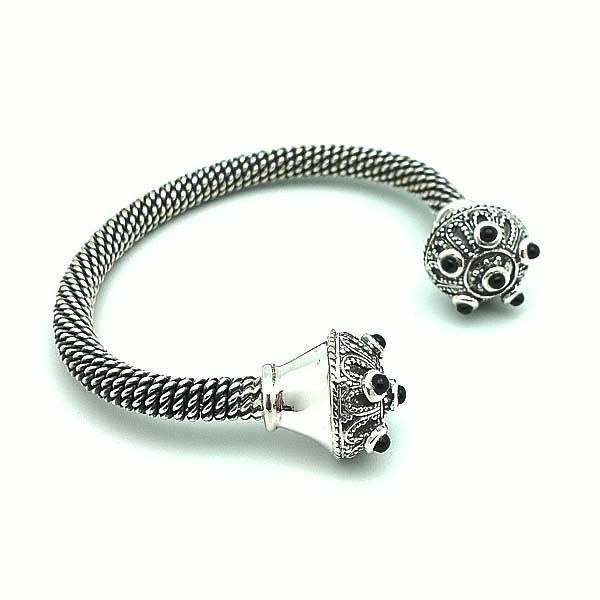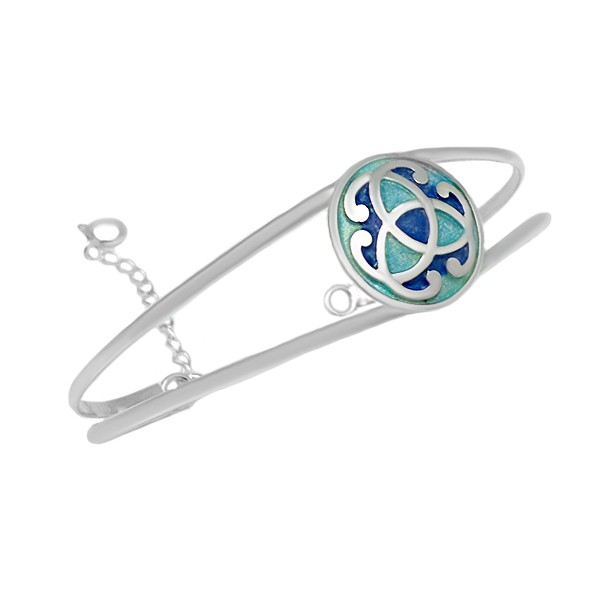Silver torque
€169.95
Tax included
Torque in sterling silver and jet.

Urgent shipping in 24/48 hours

Wrapped for gift

100% Secure Payment
Torque made in Sterling silver and Asturian Azabache of first quality by goldsmiths Gallegos.
Measurement: Adjustable.
Thickness of rim: 5 millimeters.
Maximum tip thickness: 14 mm
---------------------------------------------------------------------------------------------------------------------------------------------------------
Where do the Torques come from? What are they? Below we tell you a little bit about the history of these jewels:
A torque, also written as torq or torc (from the Latin 'torqueo', to twist, due to the crooked form of the collar) is a rigid and round collar, which is open at the front, like a circular horseshoe. Typically the two tips of torque featured ornaments sculpted with spheres, cubes or zoomorphic shapes, and less often human figures. The body of the collar was normally, but not always, coated. Although the most common were necklaces, there were also bracelets of this form. The torques were made of intertwined metal strings, usually gold, bronze or copper, and in very few cases silver.
It is important to note that because "torc" means in ancient Irish "boar", similar to the Gallic "torcos", a relation can be established with the sacred value of the animal in Celtic mythology. This would suggest some kind of equivalence between the necklace and the animal symbol for death and resurrection.
The torques were used by several towns of the Bronze Age, from 1000 BC. C., until around the year 300, including the Galatians (or Celts of Anatolia), several Germanic tribes of Scythia and the Persians. However, it is widely known as a typically Celtic necklace from the time of La Tène, worn mostly by Bretons, Gauls and Iberians.
One of the earliest known representations of a torque is found in the Warrior of Hirschlanden, an itifalic statue of a naked warrior made of sandstone, the oldest life-size anthropomorphic representation of the Iron Age found north of the Alps. It was made by the Hallstat culture in the early Iron Age (800-475 BC) and can be observed at the Württembergisches Landesmuseum in Stuttgart.
Representations of gods and goddesses in Celtic mythology often show the use of torques. The famous sculpture of the "Dying Galata" [1] Roman copy of the original Greek, shows a warrior, Gallic, wounded who is naked except for the torque. Examples of this have been discovered in Britain and Europe during archaeological studies [2]. A notable example was found in the Anglo-Saxon tomb of Sutton Hoo.
Some authors think that torque was a female ornament for women until the 4th century BC. C., when it became an attribute of warriors. However, most authors disagree, arguing that they were used as a sign of nobility and high social status: a military decoration given to warriors for their deeds in battle, as well as a divine attribute, based on the fact that many representations of gods Celts carry one or more torques. Images of the god Cernunnos have been found carrying a torque around his neck, torques hanging from his antlers or holding in his hand, as well as torques in the tombs of Celtic princes.
Because Roman consul Titus Manlius after challenging a cock to a bout and killing him, took his torque and took it always, he received the nickname Torquatus (which carries a torque). In this way the Romans adopted the torque as a decoration for distinguished soldiers and elite units during the Roman Republican period.
The two main torques of the Final Bronze found in the Peninsula (and more concretely in the present Extremadura) belong to two sets of goldwork, called respectively Treasure of Berzocana (Cáceres, 1964) and Treasure of Sagrajas (Badajoz, 1970). Both are currently in the National Archaeological Museum of Spain, in Madrid.

Torque de bronce de Arguedas.
There are also notable pieces found in Arguedas (Navarra), in a Celtíbera necropolis of the second Iron Age (300 BC), which, due to the incinerations of the body, were fragmented. Only one was found in excellent condition, of bronze, with two balls flattened at each end.
Also on the coast of Lugo was a massive gold torque, an outstanding piece belonging to the asturnorgalaic type, dating to the first century. It came from Chao do Castro, Burela city council, and belonged to the Blanco-Cicero Collection, Which happened to Gil Varela. The characteristics of this torques are the own of this type: rod of circular section, wires rolled in the two thirds ends and truncated ends and Scotland. The central third has a good filigree job. Nowadays it is exposed in the Provincial Museum of Lugo. It measures 211 mm in diameter and 65 mm in length, with a weight of 1,812 grams of gold of good quality (23 carats), weight well above the average weight that used to have the Celtic torques, about 500 grams.
Modern torques
The hippie movement of the 60 'and 70' returned the torque to fashion, not only as necklaces and bracelets, but also as rings. Torques bracelets are frequently used today by men and women. On the other hand, torques are popularly used as piercing in the ears, nipples, navels and other parts of the body.
Torque is also the symbol of Saoi, the highest honor in Aosdána, the Irish artists' organization, which can be awarded to any of its members.
Some European neopagan movements, Celtic Wicca, Neodruidism and Asatrú have recovered old traditions and customs in the use of torques and other decorative complements.
15T26052
1 Item
No customer reviews for the moment.
